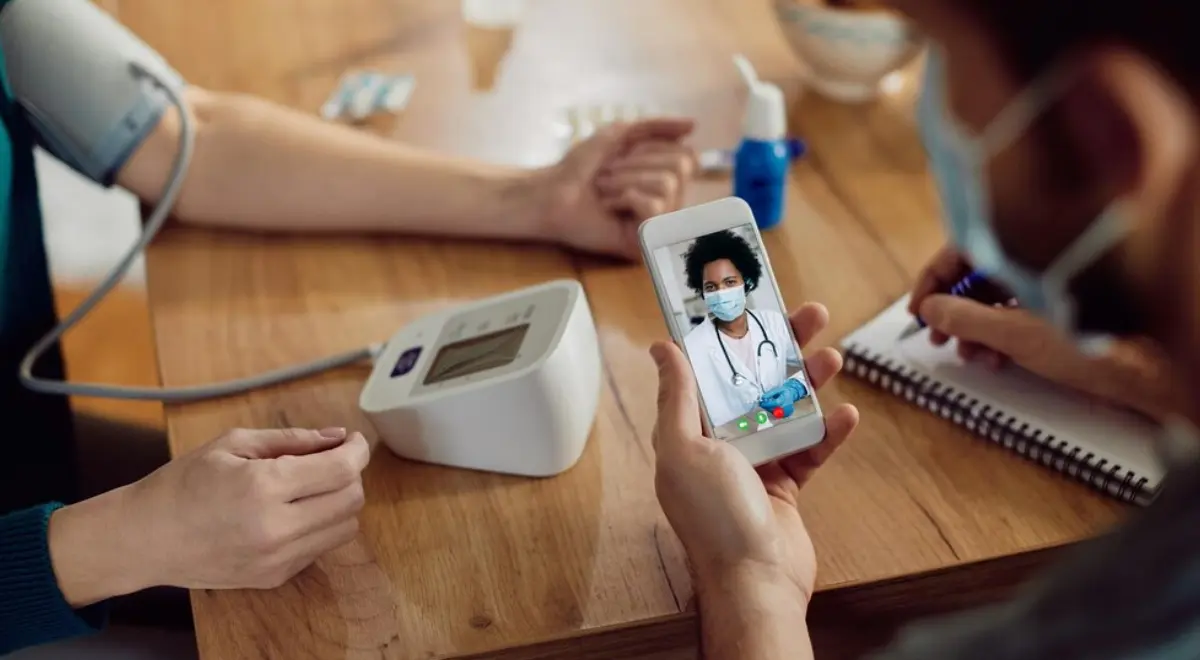How Providers Can Benefit from RPM in CCM Programs?

Providers are always on the lookout for ways and means to achieve patient engagement and the resultant outcomes? Remote Patient Monitoring (RPM) in conjunction with Chronic Care Management (CCM) has been a boon for providers. As per a study, chronic conditions results in approximately 90% of the country’s annual healthcare costs.
Healthcare organizations are opting for remote healthcare programs like RPM and CCM to reduce healthcare expenses and provide more efficient treatment to patients with chronic conditions.
Table of Contents
ToggleWhy is RPM Important for Healthcare Providers?
Remote patient monitoring is important as it allows healthcare providers to collect real-time data of patients’ health, including monitoring of vital signs like blood pressure, heart rate, and blood glucose levels, pulse rate, and more.
It plays a significant role in the early detection of any abnormalities or changes in the baseline health report with continuous monitoring and enables timely intervention leading to prevention of acute exacerbations of conditions in chronic patients.
Why is CCM Important for Healthcare Providers?
Compared to RPM, Chronic Care Management (CCM) covers a wider range of care management services and focuses on developing and implementing a comprehensive care plan for people with chronic diseases. This care plan, also known as a CCM program encourages patient engagement and helps in improving the quality of treatment for people with chronic conditions via a customized care plan.
A CCM program takes into account the patient’s care needs, medical history, and current health condition via consistent monitoring, medication management, and care coordination with specialists.
Types of CCM Programs & Codes
- Chronic Care Management Program (CCMP): Healthcare providers adopt a variety of care management programs, depending on their patient’s needs. The Medicare reimbursement rates for CCM are as follows:
- 99490: (20 minutes) – $62.69
- 99439: (additional 20 minutes) – $48.45
- G0511: (20 minutes by RHC/FQHC) – $76
- 99491: (30 minutes) – $85.06
- 99437: (additional 30 minutes) – $61.25
(rates may vary across states due to differences in regional cost factors, local policies, and adjustments made by CMS Administrative Contractors (MACs))
- Complex Chronic Care Management Program (CCCMP): This complex chronic care management program for patients with multiple chronic conditions that lasts at least a year covers thorough care planning for chronic conditions requiring moderate to very complex medical decision-making. Reimbursements for this program are:
- 99487: (60 minutes) – $132
- 99489: (additional 30 minutes) – $71.06
(rates may vary across states due to differences in regional cost factors, local policies, and adjustments made by Medicare Administrative Contractors (MACs))
CCM services are primarily offered by the clinical staff under the supervision of a qualified practitioner and are reimbursed by Medicare and most private medical insurance companies. Chronic patients who receive more CCM time and care are likely to benefit from reduced hospital admission rate and fewer emergency visits to the doctor’s clinic.
How RPM Works With CCM?
RPM is recommended as an add-on service to CCM and enables healthcare providers to monitor their patients remotely and on a continuous basis. It can be integrated with CCM using a variety of approaches, such as connected devices, patient portals, software dashboard, advanced platforms, and mobile apps. When an RPM service is implemented along with a CCM program, it provides healthcare practitioners with a more clear and complete picture of their patients’ health, allowing them to make better care decisions.
Here are some of the ways RPM and CCM function seamlessly together:
- Eases Clinical Complexity: CCM offers an organized approach to managing patients and RPM helps in this initiative by providing access to real-time data on patient health.
- Lowers Financial Costs: Medicare reimburses for both RPM and CCM services. So, when used collectively, both of these platforms have the potential to lower overall healthcare costs by avoiding unnecessary clinic/ hospital visits.
- More Frequent Monitoring: While CCM includes regular patient-provider communication, RPM goes a step further by allowing continuous monitoring of patient health.
- Closing Care Gaps: RPM data may be shared with all healthcare professionals within a practice, thereby avoiding the care and communication gaps. CCM ensures 24/7 access to healthcare providers, while RPM provides 24/7 health data monitoring.
To ensure a smooth integration of RPM and CCM, providers must work together as a team. Identify eligible patients by focusing on the ones with chronic conditions who would benefit from continuous monitoring and proactive care coordination. Common conditions include diabetes, hypertension, obesity and heart disease.
Create a comprehensive care plan tailored to each patient’s needs. This plan should include regular monitoring schedules, communication protocols, and intervention strategies.
Continuously monitor patient data, and adjust care plans as needed. Review the collected data to identify any health changes to intervene early.
When billing for RPM and CCM at the same time, the team should ensure that each service is completed within the CMS specified time frame.
RPM & CCM Improves Patient Engagement
Patient engagement is an important aspect of remote healthcare, especially when it comes to treating chronically ill patients. An effective CCM program prioritizes strong patient-provider relationships, educating patients about their chronic conditions, and encouraging self-management. RPM supports this initiative by actively engaging patients in their self-care, keeping them proactive and assessing their health vitals on a daily basis.
When RPM and CCM are integrated in a treatment plan, providers witness higher engagement, better adherence to treatment regimens and healthier lifestyles among patients. All this helps improve patient outcomes and engagement.
Implement Cost-effective RPM & CCM Programs With HealthArc
With rising healthcare costs, getting yourself treated for a chronic condition seems like a financial burden. But, RPM and CCM services are coming as a rescue point for both healthcare providers and patients looking to save on medical expenses. By adopting both of these remote care programs, healthcare practices can limit in-person clinical visits and save big on resource allocation. Also, early intervention and preventative care minimize the overall cost of chronic care and limits emergency hospitalizations.
Implementing an effective CCM program can significantly improve chronic care management and patient outcomes. HealthArc’s digital health platform allows healthcare practitioners to set specific care management goals, improve healthcare outcomes and simplify patient care and management.
Our advanced care management platform ensures seamless patient communication. Along with a dedicated customer success team, physician dashboard, and billing capabilities, HealthArc provides a holistic solution for launching a successful RPM and CCM program.
Please request a free demo to discover more about how we can assist your organization reach its care management objectives. Feel free to contact our team at +201 885 5571 if you have any questions.
Most recent blogs
Categories
- Advanced Primary Care Management
- Behavioral Health Integration
- Cellular Remote Patient Monitoring
- Chronic Care Management
- Chronic Care Management Billing
- Chronic Care Management CPT Codes
- Chronic Care Management Program
- Chronic Care Management Software
- Digital Health Platform
- Principal Care Management
- Principal Care Management CPT Codes
- Remote Care Programs
- Remote Monitoring Devices
- Remote Patient Care
- Remote Patient Monitoring
- Remote Patient Monitoring Billing
- Remote Patient Monitoring CPT Codes
- Remote Patient Monitoring Devices
- Remote Patient Software
- Remote Therapeutic Monitoring
- Remote Therapeutic Monitoring Billing
- Remote Therapeutic Monitoring CPT Codes
- Telemedicine & RPM
- Transitional Care Management
- Transitional Care Management Billing
- Transitional Care Management CPT Codes
Related Posts
- February 21, 2025 | Read Time: 5 mins
RPM’s Role in Identifying Early Symptoms of Chronic Conditions for Prevention
- February 14, 2025 | Read Time: 4 mins
Monitoring Post-Surgical Recovery With RPM Systems
- February 10, 2025 | Read Time: 5 mins






